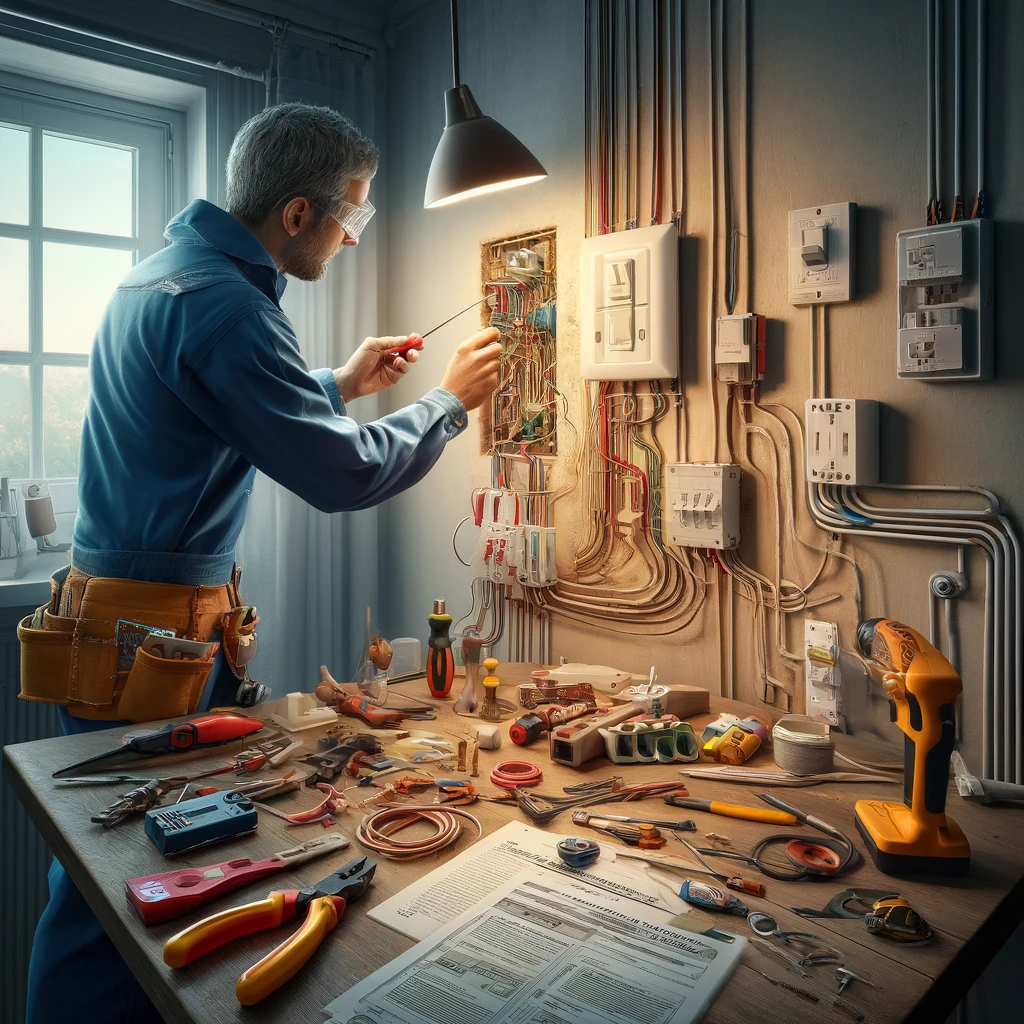
24 HOURS & EMERGENCIES
07301 611 578

Back to Blog
How to Safely Replace a Light Switch: Top Tips and Best Safety Practices
Advice
10th April 2024

Replacing a light switch is a common home improvement task that, while seemingly straightforward, involves dealing with your home's electrical system. This can present safety risks if not done correctly. With electrical work, safety is paramount, and knowing the safest way to replace a light switch is essential for any DIY enthusiast. This article provides a comprehensive guide on safely replacing a light switch, covering the top tips and best practices to ensure a successful and safe update to your home's lighting system.
Understanding the Basics
Before you start, it's crucial to understand what you're dealing with. A light switch controls the flow of electricity to a light fixture, allowing you to turn it on and off. Replacing it involves removing the old switch and installing a new one — a process that requires handling electrical wires.
Top Tips for a Safe Replacement
1. Turn Off the Power
The first and most crucial step is to ensure there is no power flowing to the switch you're planning to replace. Locate your home's electrical panel and switch off the circuit breaker corresponding to the room where the light switch is located. This action will cut off the power supply, significantly reducing the risk of electric shock.
2. Confirm Power is Off
After turning off the circuit breaker, it's essential to confirm that the power is indeed off. You can do this by turning on the light switch to see if the light comes on. For an added layer of safety, use a voltage tester on the switch's terminals to ensure no current is present. Only proceed once you're certain there's no electricity flowing to the switch.
3. Use Insulated Tools
When working with electrical components, always use insulated tools. These tools are designed with non-conductive handles to prevent electric shock, providing an extra safety layer while you work.
4. Carefully Remove the Old Switch
Unscrew the switch plate and gently pull out the switch from the wall, exposing the wires connected to it. Take note of how the wires are connected, as you'll need to attach them in the same way to the new switch.
5. Disconnect and Reconnect Wires Safely
Disconnect the wires from the old switch. If the wires are wrapped around screws, loosen the screws and unhook the wires. If they're inserted into holes in the back of the switch (a method known as "back-wiring"), you may need to press a release mechanism or gently pull them out. Connect these wires to the new switch, ensuring they're securely attached and that the connections match the original setup.
6. Secure the New Switch and Test
Once the wires are connected, carefully push the switch back into the wall and secure it with screws. Attach the switch plate cover. Turn the power back on at the circuit breaker and test the new switch to ensure it works correctly.
Best Safety Practices
Wear Protective Gear: Safety glasses and gloves can offer additional protection against unexpected sparks or sharp objects.
Double-Check Everything: Before restoring power, double-check all connections to ensure they're secure and correct.
Know Your Limits: If at any point the task seems overwhelming or dangerous, it's best to consult with or hire a professional electrician. Some signs that you should call a professional include encountering unfamiliar wiring, multiple wires that are difficult to identify, or feeling unsure about the wiring connections.
Conclusion
Replacing a light switch can be a fulfilling DIY project, adding functionality or style to your home's lighting system. However, the safety of you and your home is the top priority. By following these steps and adhering to the best safety practices, you can replace a light switch safely and confidently. Remember, when in doubt, consulting with a professional electrician is always the safest choice. This guide aims to empower homeowners with the knowledge and confidence to tackle home electrical improvements while emphasising the importance of safety in all DIY electrical projects.
Read More
Explore more articles on the world of Electrics!
2024 Ⓒ Spark Electrics